
For the past couple of years, I’ve carried my Aranet4 carbon dioxide monitor* with me when I travel. For much longer than that, I’ve been checking the ventilation in hotel rooms. What I’ve found is that it’s rare to see a hotel room ventilated properly. Most hotel rooms have exhaust ventilation in the bathroom. I’ve never seen a hotel room with supply and exhaust ventilation. Last week, though, I got lucky. I stayed at the Hyatt Regency in Seattle while attending the always excellent National Home Performance Conference.
The toilet paper test
After a visual inspection of the exhaust vent in my hotel room, I almost always do the toilet paper test. I tear off one sheet of toilet paper and see how well it sticks to the exhaust vent. If it falls off, the vent is doing little to remove stale air from the room. If it gets shredded and sucked into the vent, well, that’s a bit too much exhaust.
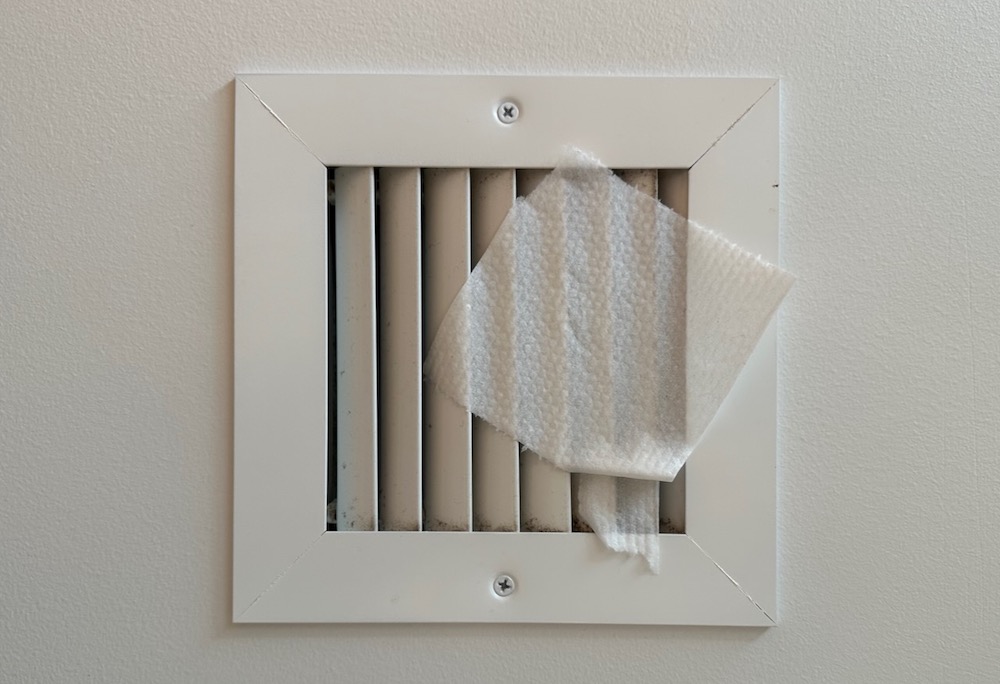
In my Hyatt Regency room, the toilet paper stuck with what seemed like an adequate amount of force. Hotels never buy the expensive calibrated toilet paper, so there’s some guesswork here.
A cubic foot out…
Now, if the exhaust vent is pulling air out of the room, that means air is coming in somewhere to make up for the lost air. A cubic foot of air going out will be replaced by a cubic foot of air coming in. (In metric world, that’s 35.3 cubic feet out and 1 cubic meter in.) So where was my makeup air coming from?
Weekly Newsletter
Get building science and energy efficiency advice, plus special offers, in your inbox.
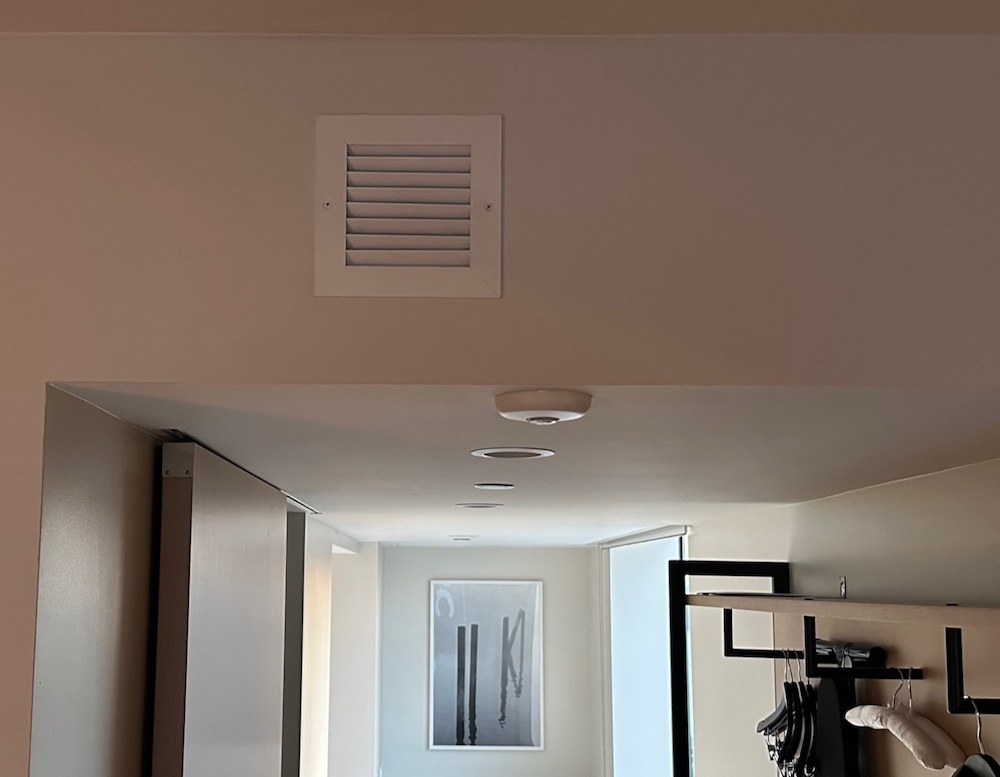
I first felt around the door. A little bit was coming in at some places but not nearly enough to replace what the bathroom exhaust was pulling out. Then I looked in the main room and saw the little vent in the photo above. At first I thought it was the supply for the heating and cooling system.
But it wasn’t. That little vent was the same size as the grille in the bathroom and seemed to be blowing about as hard as the other one was sucking. Actually, it must have been blowing a little less hard because I know some air was coming in around the door, too. It was great to see a supply and exhaust ventilation system in my room.
Carbon dioxide level
My carbon dioxide (CO2) monitor showed the same story. In the graph below, the range of CO2 was from ~500 to ~900 parts per million (ppm). A peak of 900 ppm is amazingly low for a hotel room. An average of 686 ppm is even better!
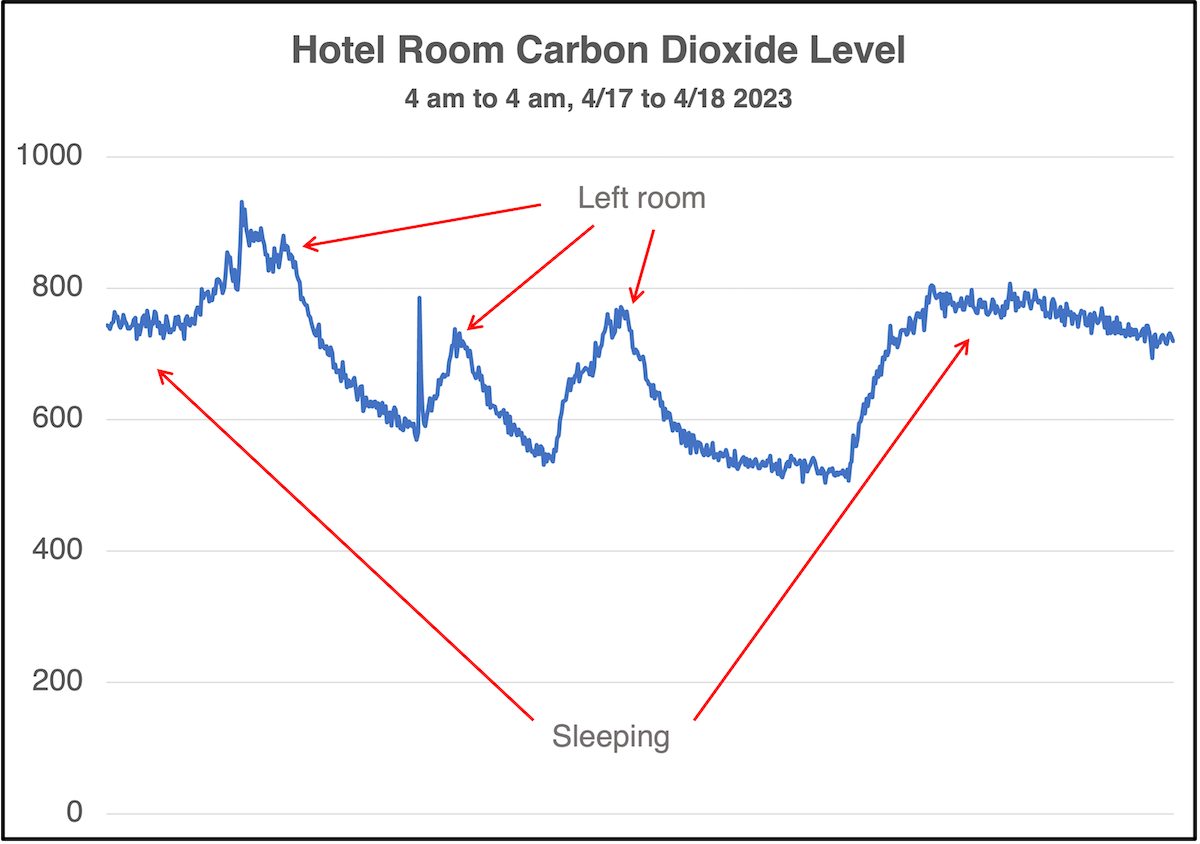
I’ve annotated the graph with the three times I left the room and the two periods when I was sleeping. You can see the decay in CO2 level with time after I left. In fact, there are mathematical models you can use to convert that rate of decay into a ventilation rate. You also can see that the CO2 level started dropping a little while after I went to sleep. That’s most likely because of a lower metabolism, slower breathing, and thus less CO2 coming out of my lungs.
And a plumbing design bonus
Not related to ventilation, but the shower design was nice, too. You can see the controls on the left, at the entrance, and the shower head on the right. (That’s not a window beneath the shower head. It’s a reflection of the mirror in the glass shower wall.) The reason it’s a nice design touch is because you can turn on the shower without getting the initial blast of cold water in your face.
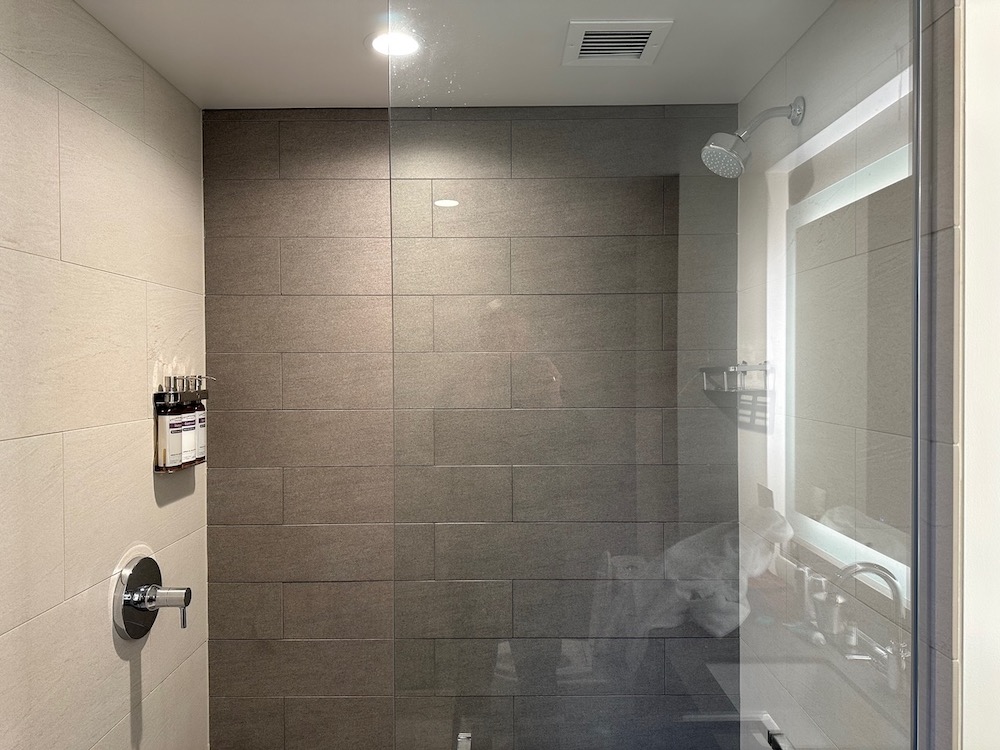
You can’t see it in this photo, but this shower had another nice touch, too: a linear drain.
The sum and substance
Ventilation is important. Having a supply and exhaust ventilation system is ideal. When the supply air comes from a known location where it brings in the best possible air from around the building, it’s even better. I don’t know where the supply air was coming from in this hotel, but I think I’d have noticed if it was coming from the street level, or worse, the parking deck.
And the absolute best would be to have a balanced ventilation system (equal supply and exhaust) with recovery of heat and, in most places, moisture. Still, I’m really happy to have had both supply and exhaust ventilation in my room at the Seattle Hyatt Regency. Kudos to them for doing it right!
Allison A. Bailes III, PhD is a speaker, writer, building science consultant, and the founder of Energy Vanguard in Decatur, Georgia. He has a doctorate in physics and is the author of a popular book on building science. He also writes the Energy Vanguard Blog. You can follow him on Twitter at @EnergyVanguard.






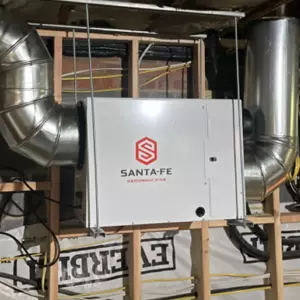
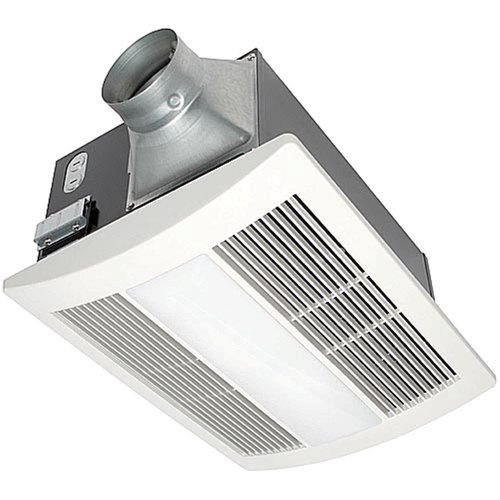







4 Comments
Allison - Why the asterix on 'Aranet4 carbon dioxide monitor' in the first line?
I'm surprised you didn't mention the ventilation grill in the shower - it's actually located in the correct place!
According to Corbett Lunsford from the Home Performance channel on Youtube, the proper location for a bath fan is right over the tub or shower (where the moisture is generated).
Hotel Bathroom Wrecked by Design
https://www.youtube.com/watch?v=DjeOhCfOhO4
I agree, much more often I only see exhaust ventilation. But perhaps in some cases this is enough?
Not exactly building science, more human factors engineering: your shower also has one of my both favorite and least favorite new features--pump-style shampoo/conditioner/body wash. I love the concept, but almost every hotel shower I've used that has them use extremely low-contrast print that my aging eyes simply can't read when I'm using the shower. At my last hotel stay I thought ahead enough to read the labels BEFORE getting in.
Log in or create an account to post a comment.
Sign up Log in